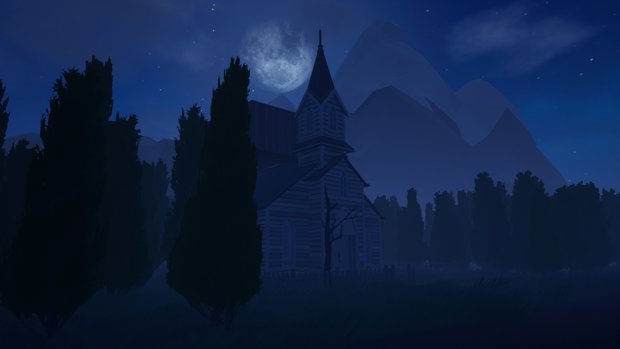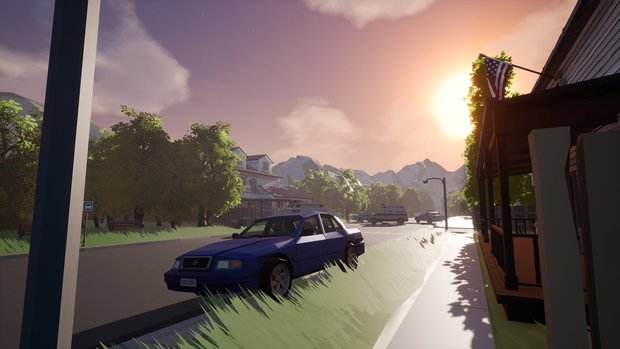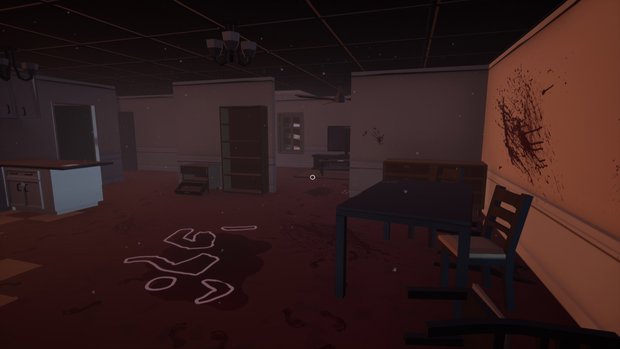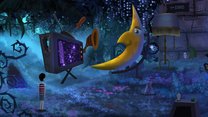After You: Level Escape review – Puzzles come first in this raw but engaging, unapologetically challenging game

- 0 Comments
While the obscure logic in our favorite Golden Age adventure puzzles has faced no shortage of criticism, for many it was part of what first enamored us. Sure, the classics boasted imaginative worlds and storytelling a cut above what other games were offering, but there was also a romantic quality to getting stuck on a section for days at a time, to pondering what you might have missed at all hours of the day, to stubbornly refusing to consult a guide, and a deep satisfaction in finally being able to uncover the mystery and move forward.
If this sounds like how you take your adventure, After You is tailored with your interests at heart. Heavy on the puzzles and light on everything else, it’s a game that knows what it is and embodies its mission unapologetically—for better and worse. It proudly boasts of its challenge, and in valuing adversity above all else, it sacrifices refinement that would have greatly improved the overall package, which is full of unrealized potential. Furthermore, while the game is certainly tough, design flaws account for a not-insignificant portion of the difficulty, and a repetition in puzzle logic makes for diminishing returns. Nevertheless, After You features an admirable assortment of headscratchers, some of which are very creative, and in the end offers a stimulating experience for the puzzle gluttons among us.
After You (subtitled Level Escape, or Level Xscape, depending on where you’re looking) consists of three chapters. The game autosaves at the end of each and this is the only save feature, so if you get stuck and quit, you’ll have to play through to where you were before progressing. This sounds scarier than it is—the chapters can take a long time if you’re struggling for solutions, but in terms of content they’re actually pretty short. It took me about eight or nine hours to play through all three, but video walkthroughs clock in at about seventeen minutes, so things move pretty quickly once you know what you’re doing. While the restrictive save system initially felt like a gimmick to me, I came to appreciate it, as starting fresh sort of functions as a mental reset when you get stuck.

The three chapters combine to tell an interesting story, albeit one that isn’t very fleshed out. You play as Aron, a husband and father who has sunk into depression now that his son has left for college. At the beginning of the first chapter, Aron awakens to a series of strange discoveries in the tiny town where he lives. A car is parked outside his house, belonging to a neighbor whose home is barricaded with caution tape a few houses down. Unoccupied police cars and an ambulance are scattered about, while someone else’s fence has been torn down by a semitruck. And yet not a soul is in sight. When Aron enters the only local bar (after you solve some puzzles to get him there), he witnesses an ominous red light and hears strange voices.
Aron decides he won’t stick around to encounter whatever has caused all of this, “borrowing” his neighbor’s car to make his escape. The second chapter finds him stopping for gas in another vacant town where he witnesses further eeriness, while the final chapter sees him investigating a place he is uncertain why he was compelled to visit. Each chapter figures into the overarching narrative but also tells a story of its own through the form of notes from various unseen characters—Aron’s wife and neighbors, a radical priest, and so on. These notes also function as clues to the game’s puzzles. There’s a lot of charm to these micro-mysteries, and the conclusion is poignant and thought-provoking, but there is a certain mismatch between the decidedly laid-back storytelling and the heavy, often grisly subject matter.
The narrative is very much secondary to the gameplay, which you will navigate using a first-person interface that is simple but mostly serviceable. You freely move with the keyboard or a gamepad analog stick, controlling the camera with either the mouse or a second stick. There is a circular cursor in the center of the screen that is empty in the middle until it hovers over an interactive item, in which case it becomes solid, accompanied by a sound effect. Photographs and clues with text are always highlighted with a glow, whereas doors, items you can pick up, etc., generally are not, though the cursor will (usually) respond to them. In one chapter you receive a flashlight (called a “torch” here) that you can turn on and off by pressing another key, with no concern about it ever running out of battery power.

I said “usually” earlier because something that heightens the difficulty is that not every interactive object will prompt a sound effect or cause the cursor to turn solid, meaning there are times when you have to study the environment carefully and make a guess as to what is or isn’t interactive. Perhaps this was intentional to make things more challenging, but it reads as a design flaw since there usually isn’t any apparent rhyme or reason to it, as if certain items were simply forgotten about. To make things more confusing, there are three different keys or buttons for interactivity, two of which are designated for multiple tasks (for example, one is used to “read/open/use” items). But really only one command is ever necessary, as you can only complete one action with any given object. There is also a button for jumping, which is never required. Near the end, I found myself wandering about aimlessly when I was stuck, moving the cursor to random objects and cycling through all of the buttons to try to find some way forward.
Visually, After You is simple but attractive. Cel shading adds charm to trees that line the streets in rows in the introductory small town and later extend into a dense, dark forest surrounding an even tinier pocket of civilization. Character models, when they do appear (mostly in photographs), have a stylized low-poly look with little detail, lacking even visible noses and mouths. Light and shadows are used cleverly, sometimes playing a part in the puzzles. While the largely static environments are pleasant to look at, however, navigating them is occasionally hampered by design issues. A few times I wandered into a small patch of trees and had some trouble orienting myself to get out of them. (It’s a good thing I particularly liked the look of the trees, I guess.) At other points, you’ll reach the end of the map and just suddenly stop, despite there seeming to be ample space in front of you. In a game designed to offer little in the way of guidance, that happens frequently enough to become mildly annoying.
Sound is likewise minimal but effective. There is very little music, mostly reserved for cutscenes that are typically accompanied by gentle piano melodies. The sparse score nicely complements the solitary gameplay, which is mostly quiet, with sound effects generally limited to player actions. If you use a drill on something in the environment, for example, you’ll briefly hear the appropriate noise. The subdued ambience places greater emphasis on these effects, allowing them to ring out in the void. Overall, this creates a contemplative vibe that serves the story very well. There is voice acting: Aron makes various comments throughout, and a few others appear in smaller roles toward the end. The actors are well-cast, but the performances sometimes have a flat, stilted quality to them, which struck me as being a matter of direction rather than talent.
Gameplay is where After You displays its greatest strength, as despite its production limitations, it has no shortage of solid puzzles, a few being immensely inventive. Most of the puzzles involve numbers and a proper sequencing of actions, and all necessary clues can be found within the game. Working through these puzzles is engaging from start to finish, though by the end some of their tricks become a touch too familiar. But occasionally, you’ll come across one that really makes you think outside the box. I don’t want to say too much, but there are a few parts where clues are built into rather unexpected aspects of the game design. These moments amount to something special that challenges the habits of deduction many are accustomed to in games like this. This is where the game finds its greatest value as an adventure.
It definitely lives up to its claim of being rather challenging, too. A large part of this challenge stems from the fact that there is very little in-game guidance. When you start playing, your overall goals are not at all clear, nor the specific type of logic the puzzles are built around, so you have to spend some time exploring before these things come into focus—if then. About a half hour or so in, I encountered a number pad and knew I needed to find some way of deducing a code for it, but after playing for a considerable amount of time, leaving the game overnight and returning to it the next day, I could still find absolutely no indication of what the code was or even how many digits it should be. I admit that I caved and consulted a walkthrough, but I still had no idea what the logic behind it was. Eventually, after scouring the internet and stumbling upon a few forums, I was able to find the clues that made deduction possible. It’s actually quite clever, but once I knew what kind of thinking went into those first few puzzles, I was able to work my way through the rest of the game more easily. While a few break the mold, the formula for the bulk of them never really changes from that point on, just utilizes different variables.
Final Verdict
Ultimately, After You is crafted for a particular segment of the adventure game community—those who value sheen and finish far less than they do being utterly stumped. Those who fit this bill will find a low-key, engaging brainteaser experience with little handholding. If the game logic becomes overly repetitive by the end, this is offset by a few truly unique puzzles throughout that bring some freshness to the method of solving them. With more care and a bigger budget, the narrative and overall production value could have been greatly increased for a better-rounded adventure. But even without them, in the end After You achieves just what it promises—a steep (if only a little unfair) challenge for those who dare to embrace it.
Hot take
A little too unrefined with a bare-bones narrative, After You is nevertheless packed with engaging and demanding puzzles, some of which inspire creative thinking.
Pros
- Plenty of smart and challenging puzzles that make you think outside the box
- Simple but pleasant look and feel with charming cel shaded graphics
- Understated sound design evokes a contemplative vibe
- Intriguing narrative premise with self-contained mysteries within each individual chapter
Cons
- Limited production value with some design flaws
- Lifeless voice acting
- Puzzle logic becomes repetitive by the end
- Casual manner of storytelling at odds with heavy subject matter
Andy played After You: Level Escape on PC using a review code provided by the game's publisher.

- Advertisement
- Help support AGH by advertising with us










0 Comments
Want to join the discussion? Leave a comment as guest, sign in or register.
Leave a comment